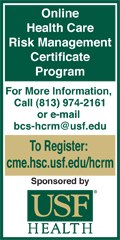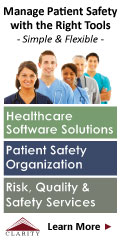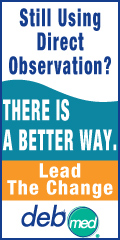 |
 |
 |

September / October 2005

Ethics Toolbox
Science, Innovation, and Objectivity
By Dennis A. Robbins PhD, MPH; Joel V. Brill, MD
The healthcare system in the United States is in desperate need of disruptive innovation. Encouraged by our culture of "new, bigger, quicker, better," technology innovates upward to create specialized products and services. This is due to a payment system that incents hospitals and physicians to focus on the most complex, challenging and sophisticated problems in healthcare. In order to pay for these innovations, we also need to focus our attention on efficient day-to-day healthcare delivery that is simple, safe, convenient, and less costly.
Perhaps no area in healthcare is more fascinating and more contentious than the challenges posed by innovative technology. New innovations generated from outside of the mainstream often challenge the conventional and long-established ways of doing things. As such, they pose a threat to the status quo. New technologies sometimes stretch the imagination, raising expectations as well as eyebrows in disbelief. In order to justify the value of these technologies, questions arise about how to judge if something is credible and worthwhile. This applies both to the clinician who considers whether to adopt a technology or modality, as well as payers authorizing payment for it. Not only must we ask questions regarding the validity and efficacy of the modality; we also must ask how best to ensure consumer quality and safety.
Currently, payers use a hodge-podge of mechanisms to evaluate new technology and pharmaceuticals. Insurers may request expert opinions from specialty societies and academic centers, convene technology assessment forums, purchase criteria from third parties, or simply perform a Web search. However, their methodology for arriving at their conclusions is not always as transparent as one expects. Who are the policy makers who decide whether new technology will be a covered benefit, or not, and what are their credentials? Since the internal criteria that payers use to make these determinations differ, it is not always clear whether coverage decisions are based on evidence-based medicine, health economics, or some other standard.
When payers assess new technology, they often contact physician and pharmaceutical "experts" for their opinion. Yet, many of these "experts" also participate as members of a Scientific Advisory Board which may predispose and shape their position rather than offering an emotionally neutral response. Membership on an advisory board could limit impartiality with respect to evaluating the technology. This is exacerbated by the fact that service on an advisory board is often rewarded with equity or stock options. Some might argue that such equity can raise the issue of incentives compromising objectivity or influence the push to show that products are effective. Healthcare professionals, first and foremost, have a responsibility and duty to patients and should take an active rule in asking the tough questions. Does the technology lead toward improvement in health outcomes? If not, what studies need to be conducted in order to demonstrate such improvement?
Creditable research plays an important role in product development, technology acceptance process, and payer reimbursement. This raises the question of the role of "peer-reviewed articles" that support the case for a given technology or product. The fact that an article is peer-reviewed does not guarantee that the conclusions are valid. When comparing new technology to the "gold standard," what passed for "research" two or three decades ago might not withstand the peer-review process today. Given that the pharmaceutical and medical device industry provides a significant amount of the funding to support research, is the evidence tainted? Where is the "evidence" that only "evidence-based medicine" should be used to justify new technology or modalities?
Disruption causes us to rethink pricing and costs as well. Advances in technology are often blamed for being the key culprit in the acceleration and escalation of healthcare costs. One needs to look no further than the dramatic growth in diagnostic and imaging services. Payers are attempting to determine whether this is due to the diffusion of technologies from the hospital to outpatient setting, practice guidelines that call for more diagnostic screening to head off potential medical problems, or simply a response to finance and economics. These days, radiological images can be digitized and sent anywhere in the world to be interpreted. Does limiting who can interpret the study and where it can be interpreted improve quality, or is "quality" being used to preserve higher costs? We are faced with the dilemma of whether the physician's ownership of a facility or diagnostic technology influences their decision to recommend the service. If ambulatory surgery centers, specialty hospitals, and outpatient diagnostic centers can meet consumer and purchaser desires for access, efficiency, and personal care in a cost-efficient manner, then why not let the marketplace decide where the service can be performed? Would we see such a proliferation of services if reimbursement for these services were tied to outcomes?
Hospitals, insurance companies, brokers, and organized medicine are not the first adopters when it comes to change. Their desire to preserve the status quo mirrors the established business community's reluctance to embrace disruption. Yet, disruption is what consumers want. Think of life without cell phones, TiVo, microwave ovens, and Target. Consumers are tired of long waits to see the doctor and huge bills for a checkup when they don't even see the doctor. They want fast, easy, in and out care for simple conditions. Witness the limited service clinics staffed by nurse practitioners that are co-locating in grocery, pharmacy, and discount stores. Several states already allow pharmacists to act as physician extenders and be reimbursed for monitoring and counseling physician-referred patients with asthma, diabetes, and dyslipidemia, as well as those undergoing anticoagulation therapy. The Medicare Part D legislation will provide almost 40 million Medicare beneficiaries access to pharmacists to provide medication-therapy management services (MTMS). These are welcome developments.
Few payers have integrated the costs of caring for the patient across the hospital, professional, diagnostic, and pharmaceutical silos to identify best practices and sites for receiving those services. The absence of predictive modeling and compliance data impacts the practitioner's ability to make good decisions. We suspect we would see a reduction in health insurance premiums if benefit broker commissions were linked to provider and hospital success in keeping patients healthy. If new technologies and new processes improve care, why are we fighting them? Rather than casting aspersions, it's time to embrace these new disruptive models if they can improve health and access while saving costs on a system-wide basis. Stay tuned!
Dennis Robbins (DennisRobbins@cox.net) is president of Integrated Decisions, Ethics, Alternatives, and Solutions (IDEAS) and co-founder of the Policy Group. He has served as an advisor on ethics and related issues for major national organizations, associations, law firms, hospital systems, and government. Robbins holds a PhD in philosophy from Boston College and a postdoctoral master's degree in public health from Harvard. He is a member of the Editorial Advisory Board for Patient Safety and Quality Healthcare.
Joel V. Brill (Joel.Brill@verizon.net) is chief medical officer of Predictive Health, LLC. He has over a decade of experience in clinical medicine, medical management, predictive modeling, and pay-for-performance systems with employer groups, health plans, and medical groups. Brill is an advisor to the American Medical Association committees on coding, reimbursement and performance improvement and is a member of the ABQAURP Board of Directors.
|
 |
 |
 |


















|
 |



